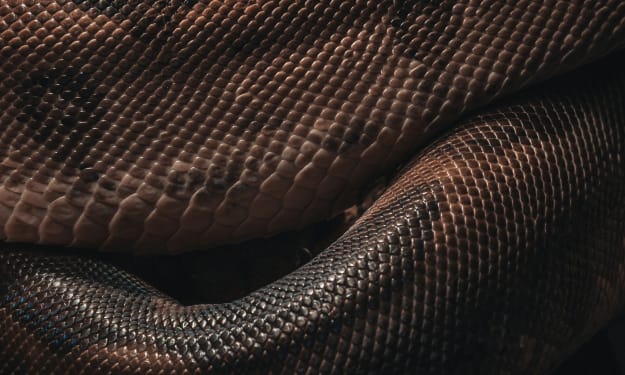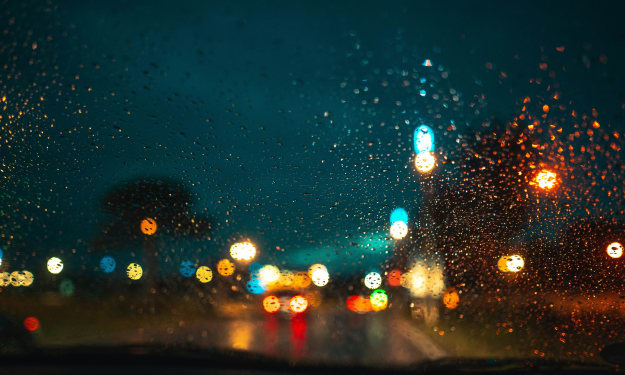
Have you ever wondered why most lawyers wear black, the same with judges. Ever wondered why they always have black robes? That's because when someone wears black, it triggers something in their brain, making them appear more powerful. Maybe Coco Chanel knew that too when she came up with a famous little black dress, which she claimed was meant for powerful women.
But is black a color? Technically not. Some people do say it is since you need to combine various other different pigments to get it on paper. But in reality, black and white are shades, not colors. Regardless of whether it's a shade or a color, a British company claims it came up with the world's blackest black or darkest material. Its pigment is so powerful that our eyes can't determine its shape and form. They named it Vantablack and designed it out of carbon Nanotubes. The purpose of these tiny tubes is to absorb a staggering 99.96% of all light that hits their surface. Your standard black surface, like that of your hoodie or from a nearby painting, can absorb anywhere between 95 and 98% of its surrounding light rays.
It's easy to see why people describe this material as a whole as intriguing as it is to look at. I don't think you'd look good in a garment made out of Vantablack. That's because the shape of the human body would become invisible altogether, and you'd end up looking two-dimensional.
The whitest white, however, is not human-made. We can find it in nature, and it has a lot to do with a pretty cool insect, the seoc kyus beetle. Even though it's considered a pest in Southeast Asia, its white scales can be brighter than any other white surface seen in nature. After studying the critter, scientists came up with a new type of super white coating. The substance found in it is called kitten, a chemical compound closely related to glucose that highly reflects light.
A lot of the white products we can find in stores today, like sunscreen and paint, have particles in them that reflect a lot of light. But most of them have these particles in the form of titanium dioxide or zinc oxide. Just to give you an idea of how powerful this white pigment is, imagine you have to paint one wall of your room white. If you want to have a crisp-looking wall, you might have to apply a couple of layers onto it to reach the desired hue. If you paint it with the super white coating, you only need a coat with a 10 Micron thickness. That's even thinner than a strand of hair.
This chemical compound isn't ready for commercial use quite yet, but once scientists have finished testing it, we might begin to see it in cosmetics or even food.
The way companies choose their colors for their branding isn't just creative; it has a lot to do also with the way we perceive various colors. Colors can evoke different emotions in people. Some companies use red for their logo because it creates a feeling of urgency. You'll see it in a lot of fast-food chains. On the other hand, the color blue seems to make people chill out. It makes us feel tranquil and safe. That's why blue is a color often used in the medical industry or by car manufacturers. The same goes for the color green; you generally connect it to growth and nature, while orange makes you feel confident and enthusiastic. That's why you'll see it used by online stores.
You'll see black being used by brands that want to be perceived as elegant and luxurious. Most high-end perfume or clothing brands use black logos and fonts. The list goes on with purple being associated with royalty and wealth and white with perfection and cleanliness.
There is even a huge connection between the colors we perceive and our memory, and here's how you can test it. Say you're studying for an exam; try making two sets of flashcards containing the same information. Write one in black and white and another one using different colors. Sooner or later, you'll figure out that the colored set is more efficient. Why? Because we have better chances of remembering facts presented in colors. Our brains are wired to make all sorts of various connections. If it can relate a certain color to a piece of information, it's more likely it will get stored.
Next time you board a plane, try playing this little game with your friends or family. Ask everyone to be on the lookout for yellow objects on board. Other people's clothes or belongings don't count, just the airplane stuff. I'll let you in on a little secret; you won't see any. That's because most airplane companies don't use any yellow in any of their branding or decor. If you stare at the color yellow for long enough, you'll understand why. You'll soon notice it makes you dizzy. No wonder airlines or other types of transportation companies too shy away from yellow. It decreases the chances of people getting sick on board.





Comments (1)
Test is not accepting comments at the moment
Want to show your support? Send them a one-off tip.